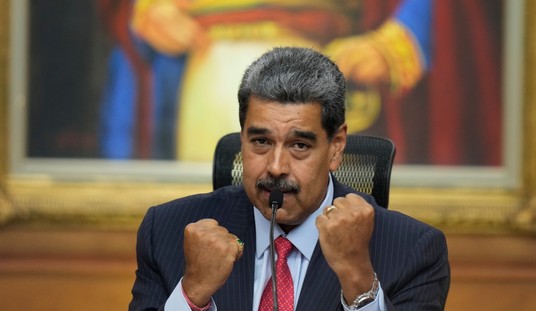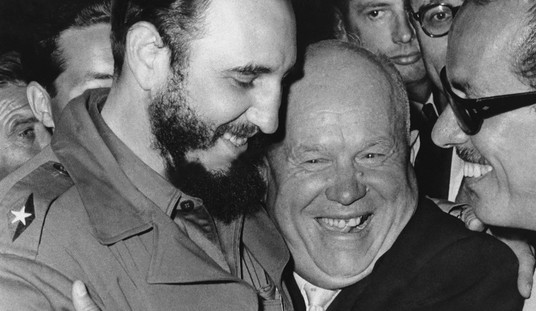Now we’ve learned the fate of convicted terrorist Dzhokhar Tsarnaev, barring the success of any subsequent defense motions and appeals. (That’s still very much up in the air according to every defense attorney who has weighed in on the subject.) Even leaving aside the larger debate over the propriety of the death penalty itself, pundits across the spectrum are also wringing their hands over the total cost of executing him. I haven’t really written all that much on the subject, partly because I simply find the whole thing dismal. For the most part, when it came to the question of whether or not the jury should send him to meet his maker, I stuck with a short answer I put up on Twitter.
Tsarnaev verdict coming. I'll say it again. He's had his day in court. Let's put the beast down and be done with it.
— Jazz Shaw (@JazzShaw) May 15, 2015
As I mentioned above, though, the new subject seems to focus on how much we’re spending – both in cash and emotional damage – on cases like this. James Allen Fox, writing at USA Today, seems to feel that that cost – whatever it turns out to be – is too high.
But in the end, I wonder if the death sentence was worth all the time, effort, anguish and expense of the trial. Was reaching for the death penalty worth subjecting the 10 women and eight men, who were fulfilling their civic duty as jurors, to heart-wrenching testimony and disturbingly graphic exhibits that no doubt will impact them for years to come? We can add 18 more to the list of victims in this case.
The troubling fact is that none of this, neither the financial cost nor the emotional toll, was necessary. After all, the defense team, long before admitting their client’s responsibility for the bombings on the very first day of trial, was willing to enter a guilty plea if the government agreed to take the death penalty off the table in favor of life without parole. Would that have been so bad?
It seems almost trite to discuss this subject in terms of dollars and cents, but since it comes at public expense the question can’t be entirely discounted, either. It would cost roughly $75K per year plus medical care to house this creature for the rest of his days. But as the author properly notes, much of that cost comes from the overhead of running our Supermax facilities. They would be there anyway, so it’s not like we’re adding on that huge cost just by shipping him off. The trial was grossly expensive, as will be the rounds of appeals to come. Sadly, that can’t be avoided.
As for the emotional toll, I won’t argue that this was tough on the jurors and the spectators as well. I’m sorry to say that this is also a cost that’s baked into this disgusting cake. But you can blame Tsarnaev for that as well. We were only dragged into this deep mire because of him and his brother. But as valid as these questions may be, the author goes a bridge too far when he attempts to encapsulate the decision to even consider the death penalty at all as some sort of controversial, ill founded strategy.
The government’s decision to seek the death penalty in this case was controversial from the start. There was hardly a consensus among the bombing victims as well as the general public concerning the appropriate penalty. Despite this, and despite his own personal stance in opposition to capital punishment, then-Attorney General Eric Holder chose to seek the death penalty in order to send a strong message that the United State will not tolerate such atrocious acts of terror.
Arguably, a stronger message would have been sent had the outcome been life imprisonment: Not only does the United States not tolerate terrorism, but it does not need to kill in order to make the point. There is nothing about a life sentence without the possibility of parole that suggests otherwise.
I have to completely disagree. Certainly there were those – even among the families of the victims – who would have chosen to avoid this. Perhaps they didn’t want to drag it out any further. They may just be Christian souls who feel that judgement is reserved for the Lord and prefer to leave it in His hands. We’ll never know their motivations, but one things is clear: the victims are not the ones who decide these things, even if prosecutors may take such sentiments into consideration from time to time. Society as a whole decides whether or not this is appropriate, and at least for now we have federal laws on the books which allow for capital punishment for such monstrous crimes.
Further, I disagree that life without parole would send the same message. Yes, it would cost money to feed and house Tsarnaev for the rest of his natural life (though we’d be spending most of the at money anyway, as noted above.) But the message would be decidedly different. Living in isolation in a Supermax for fifty years or more is no picnic to be sure, but it’s still living. The little monster would still live out his days and eventually face his end when his body gave out just like everyone else, and likely at a time when he’d come to be at peace with his own mortality. But now, this very young terrorist will awaken each day and go to bed each night counting the days he has left, looking at a life far shorter than any his less heinous peers envision. Will the next appeal be approved? Will he be granted a stay? Can he hang on to precious life, no matter how lonely and morbid, for just a little longer before he faces the darkness of eternity?
That’s the punishment Tsarnaev is facing right now. And it’s still worse than the idea of the loss of liberty for your natural life. And it’s still far better than he deserves.









Join the conversation as a VIP Member